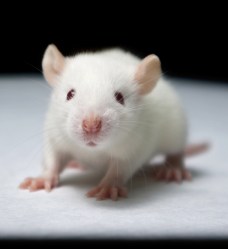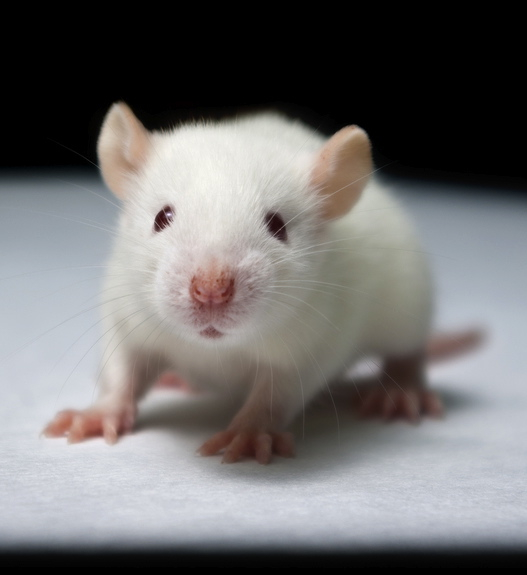 It’s been hard to avoid hearing about the recent study [PDF] linking GMO corn and pesticide (Roundup) exposure to tumor growth and early death in rats. Most major news organizations have picked it up, including The New York Times, the Washington Post, the Chicago Tribune, NPR, and the LA Times.
It’s been hard to avoid hearing about the recent study [PDF] linking GMO corn and pesticide (Roundup) exposure to tumor growth and early death in rats. Most major news organizations have picked it up, including The New York Times, the Washington Post, the Chicago Tribune, NPR, and the LA Times.
The study itself, published in the peer-reviewed journal Food and Chemical Toxicology, was performed by Gilles-Eric Seralini, head of the Committee for Independent Research and Information on Genetic Engineering and a scientist who is a self-described opponent of genetically modified food.
The group that co-sponsored the research, the U.K.’s Sustainable Food Trust, declared it to be the first “lifetime feeding trial” of GMOs’ effects in rats; Seralini and his team followed the rats for two years — the full lifespan of the animal. Most GMO rat feeding studies last no longer than 90 days — the equivalent to a much longer period in human terms, of course.
Still, it’s worth noting that GMOs entered the marketplace less than 20 years ago, and there haven’t been any lifetime feeding studies of their effects in humans. So it’s worth paying attention to what Seralini has done. Here’s how he constructed the study, as summarized by The New York Times:
The rats in the study were split into 10 groups, each containing 10 male and 10 female rats. Six of the groups were fed different amounts of a corn developed by Monsanto to be resistant to the herbicide Roundup. In some cases the corn had been sprayed in the field with Roundup.
Three other groups were given different doses of Roundup in their drinking water, with the lowest dose corresponding to what might be found in tap water in the United States, the authors said.
The 10th group, the control, was fed nonengineered corn and plain water.
The study found that in groups that ate the engineered corn, up to 50 percent of the males and 70 percent of the females died before they would have from normal aging, compared with 30 percent of the males and 20 percent of the females in the control group.
Some 50 to 80 percent of the female rats developed tumors compared with only 30 percent of the controls. And there were several times as many cases of liver and kidney injury in the exposed rats.
Other scientists immediately criticized the structure of the study, the findings, and Seralini himself. Both Monsanto and the Food and Drug Administration responded with a more guarded “we’ll review it and get back to you.”
Needless to say, California’s GMO-labeling campaign embraced the study, and it has already incorporated the findings into the political battle over Prop 37, the state’s GMO-labeling referendum.
This is not Seralini’s first study to claim toxicity from GMO corn consumption — it just appears to be the first one that has made headlines. In 2009, he found evidence of liver and other organ damage in rats in an analysis of Monsanto’s own research.
In Grist’s coverage of that study, which looked at short-term effects, Tom Philpott pointed to a peer-reviewed report [PDF] on the GMO literature published in the International Journal of the Sociology of Food and Agriculture. As Philpott put it, the report revealed that “there has actually been shockingly little research done on the long-term effects of eating GMO food — and most of what has been was conducted by the industry itself.”
Whether these foods cause toxicity of any kind in humans or livestock remains unknown. There is not evidence that industrially raised cows that eat GMO feed are as riddled with tumors as these rats were. However, there has been some evidence that Roundup, at least, may have serious and underreported health effects for livestock.
Seralini is also one of the few scientists who routinely uses actual Roundup in his research. Most studies of the safety of Roundup study its ingredients in isolation, whether it’s the active ingredient, glyphosate, or the “inert” ingredients in the formulation. Seralini earlier collaborated on a study that found evidence that Roundup’s “market formula” may have effects not captured by research that tests its individual ingredients.
And that’s why this latest study is important. It’s not that it “proves” GMOs are harmful to humans. It’s that a single study like this one can represent the only lifetime study of the effects of eating GMOs.
The fact that the study found anything different between the groups fed GMO corn and the control group demands further research. Yes, the results could be due to poor research design or simply “bad luck” for those rats. But the only way to know is to perform more research.
Why is this “difference” so key? Because the whole GMO approval regime here and abroad is predicated on the concept of “substantial equivalence” between GMO crops and their conventional brethren. The law assumes that GMO seeds are just another breed, no different from seeds produced through conventional hybridization techniques. As a result, the government has no need to require elaborate safety testing.
You’d think that scientists and our government would respond to this study by encouraging other scientists to replicate Seralini’s findings, if for no other reason than this study’s suggestion that GMO crops may not be “substantially equivalent” to other crops. Had Seralini fed rats various strains of conventional hybrid corn, no one would expect the kinds of results he found. The question is why he found what he found. It may have had nothing to do with the corn. But it would be nice if scientists agreed that we should find out.
I suspect many scientists tend to reject these findings outright out of fear of being perceived as politicized — Seralini himself is dismissed by critics in many of the above articles for his lack of objectivity. But remember that even cold fusion, one of the great scientific hoaxes of all time, wasn’t totally rejected until other scientists were unable to replicate the findings. Why isn’t that the attitude with GMOs?
Perhaps many scientists are still stuck on an old view of toxicity — one based on the idea that the “dose makes the poison.” Have they learned nothing from the new field of epigenetics? Substances that are not themselves conventionally toxic are now known to turn genes on and off at miniscule doses — and have subtle effects that are difficult to tease out of the “noise” of the complex real-world interactions of chemicals and biology.
I’m deeply disappointed in the failure of imagination that I’m seeing from mainstream scientists, in particular the easy dismissal of a study that raises questions about GMO safety. Unlike many of the industrial products that surround us (and permeate us), GMOs are still novel by historical standard.
My disappointment with the scientific community and my concern over the results of this study arises not because I know that GMOs are harmful to our health. On the contrary, it’s exactly because I don’t know. And I don’t think I’m the only one who would like to find out.
* The wonks among you should see this previous post for a discussion of the history of GMO regulation.



